The 7 Healthy Soil Habits (and How They Can End Garden Battles)
Today, so many people want to grow and eat food that’s healthy and safe. We plant. We tend. We try to use organic methods and get our kids involved. Yet we find ourselves overwhelmed by challenges and the garden we have in mind seems impossible to grow in real life.
When I asked how your garden did this year in our reader survey, I noticed some familiar problems over and over again. I’ll bet you’ve experienced at least one of the three big challenges yourself…
First off, many gardeners said their soil is not good for gardening. Their dirt is a slippery mess when wet and rock-hard when dry. Or their soils are lacking nutrients or too alkaline. “My soil is so sad,” says one reader.
The second shared struggle is weeds. Ever had veggies nearly choked out by weeds? You’re not alone—many gardeners feel like their yards are being overrun. One gardener exclaims, “I’m so tired of weeding!”
Finally, almost every gardener talks about pests and diseases. You fight aphid infestations, contend with cabbage worms, battle bunnies, and watch encroaching powder mildew with dread (wondering if you should pull that squash even though it’s loaded with fruit, just to keep the disease from spreading to the strawberries). One reader observes: “If the slugs don’t finish off the plants and veggies, then the bunnies, squirrels, and deer help themselves.”
It’s exhausting.
Why does gardening feel like a fight?
What if gardening could feel like a friendship instead?
Well, I think it can. In fact, you’ve probably experienced this sunnier side of gardening, at least on a small scale. (Otherwise, you’d be too discouraged to read blog posts about gardening. 😉 )
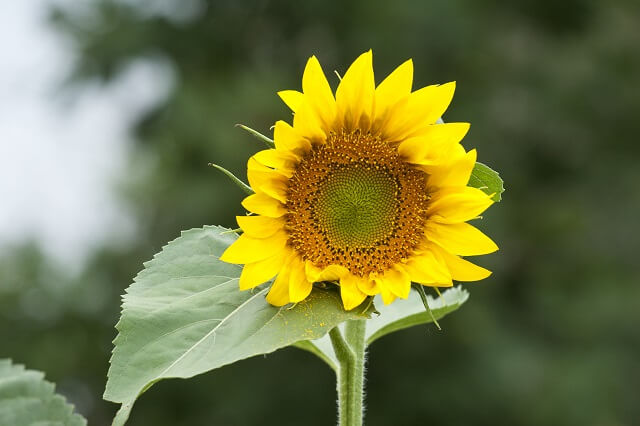
Despite all the struggles, some gardeners also told me about their inspiring successes.
The delight of the first flowers and fruit… “My first sunflower bloom is like sunshine!”
The joy of eating fresh food you grew… “The lettuce is almost gone, but I’ve been eating it for 3 months almost every day.” (Yum!)
The satisfaction of seeing your garden thrive… “OMG those plants have taken over. Sweet potato vines under 100s of Matt’s Cherry Tomatoes over cukes. I started all of these from seed. 🙂 So proud.”
The wonder of nature at work… “The garden ecosystem is finally beginning to balance itself out. I was so excited this year to see a few different avian visitors to my garden, including a fuzzy-caterpillar-eating bird (shining bronze cuckoo) which is not common where I live.”
The fulfillment of teaching your kids to grow their own… “My kids’ garden is super lush and beautiful and we are eating off of it every day!”
Now, that’s more like it!
What if we could make gardening less like battle and more like friendship ALL the time?
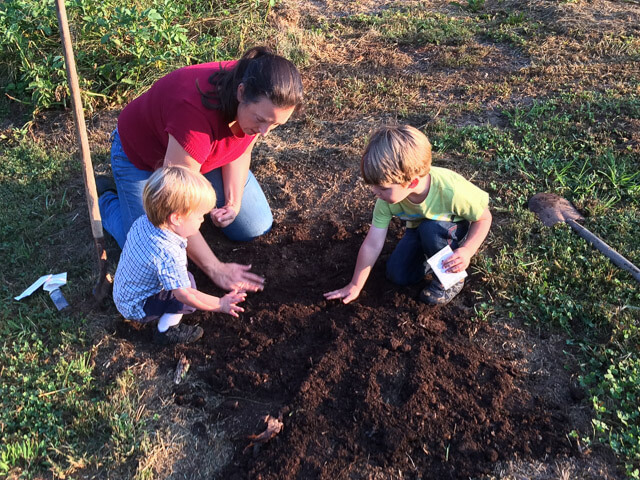
The Hard Way or Nature’s Way
I grew up gardening the hard way. While I loved spending time in the garden with Dad and Grandma, I did NOT love hoeing long rows of corn and beans in the hot summer sun.
My brother and sister and I would begrudgingly march to the garden to chop away at weeds. We’d listen to music on our pink boom box to help the time pass.
When I started gardening as an adult, I tried many of the same approaches I’d learned as a kid. Tilled, bare soil. Lonely stands of each type of veggie. Weeds and bugs as enemies to be chopped and killed.
Results were mixed, but good enough for me to keep growing.
Then, I started applying the things I’d learned in college biology and ecology classes in my garden. I took my first permaculture class and dove into books about organic gardening. I watched what was happening in my garden and in wild areas nearby.
I noticed that I rarely saw large stands of a single plant in nature. I saw how insect infestations could be quickly balanced by predators and parasites (with the exception of some non-native invasive pests). And I realized when natural areas were disturbed by development, fires, landslides, or trees falling over, the pioneers first to grow back were the plants we think of as weeds.
I saw my garden in the context of the wider world as a part of nature. I stopped battling and started balancing. I no longer thought of my garden as a summertime project and began to tend it year round.
I was more and more successful each season. Gardening became more fun and fulfilling.
The techniques I used can be applied to anyone who wants to grow food in healthy, sustainable ways. I’m going to show you common mistakes people make when trying to garden and a new system for getting the garden you want without the constant fight. You can have a garden that gets better and better with less work each year—and I’ll show you how.
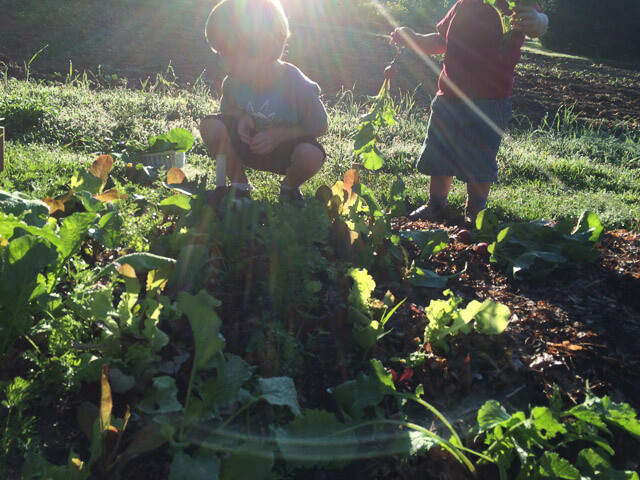
Fighters and Fixers
Many of us garden like fighters trying to knock out the competition.
Aphids? Douse those suckers in soapy water.
Potato beetles? You killed my tater. Prepare to die.
Soil hard to dig? Till, till, till!
Thistles or morning glories? Hiiiiiyaaaah! Take that you seedy weed.
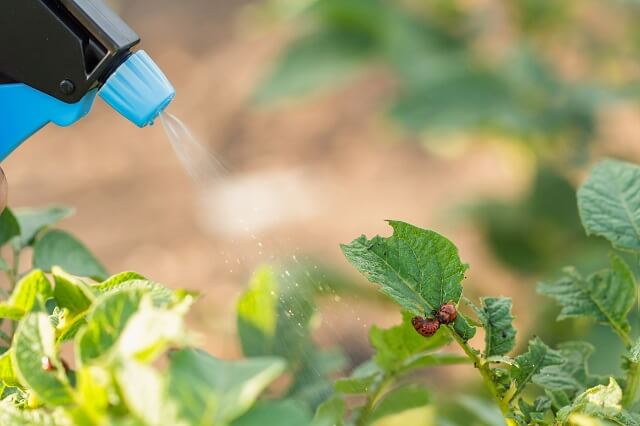
Or maybe we’re like doctors who are focused more on quick fixes than long-term health…
Powdery mildew? Cut out the diseased plant and apply fungicide.
Tomato hornworms and squash bugs? Knock them out with a round of strong insecticides.
Sickly plants? Give a dose of liquid plant food and call me in the morning.
Whoa there!
Most garden problems do not require an aggressive fight or immediate fix.
Instead of reacting with fix after fix, we can use simple habits and thoughtful design to create gardens that work with nature and support a diversity of life. These gardens are healthier for you and your family, better for the planet, and much more enjoyable to tend.
First, you need a strong foundation. You wouldn’t build a house without a foundation. Your garden starts from the ground up, too.
Healthy soil is the foundation of a happy garden.
Building and nurturing healthy, living soil is easy when you practice seven simple habits in your garden.
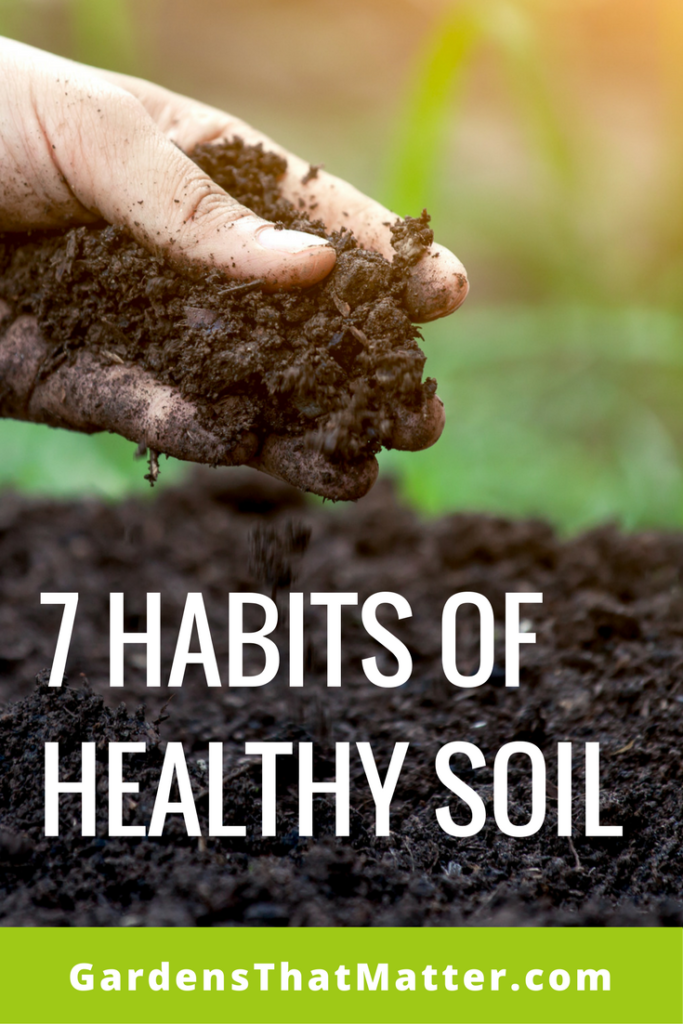
SOIL ART: The 7 Healthy Soil Habits
While developing our new Foundations of a Happy Garden course, Colby and I identified a series of actions and behaviors that naturally lead to healthier soil.
We describe these actions as habits because we think they should become automatic for all gardeners. Habits happen when we internalize a routine that gets triggered by some kind of reminder and leads to a reward. For example, falling leaves remind us to start a batch of compost and we get the satisfaction of a filled bin, plus the delayed reward of finished compost a few months later!
To make the habits easy to remember, we created the acronym SOIL ART. Gardening is one of our favorite junctures of science and art, and soil is where it all begins.
How many of these 7 habits are you practicing?
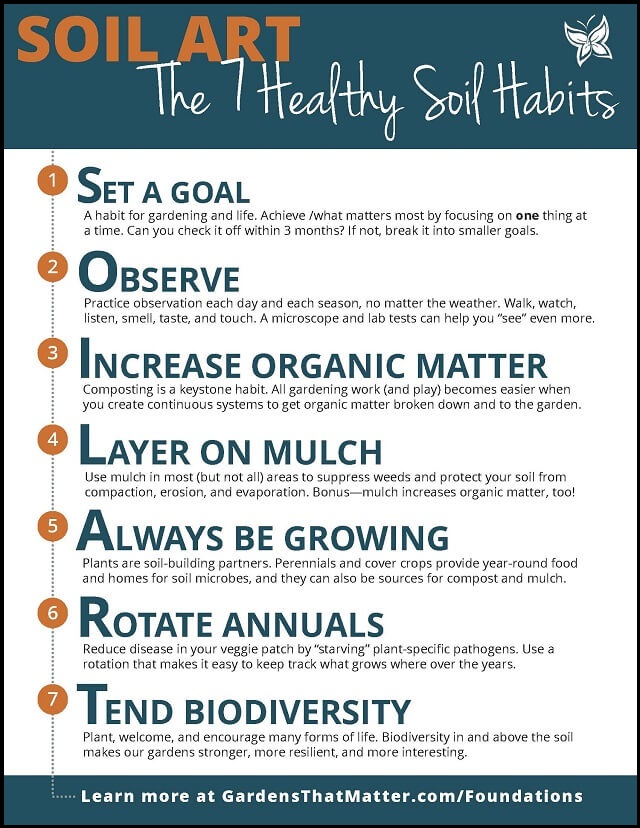
Want a full-size printable PDF? Click here!
1. Set A Goal
This is a great habit for gardening and for life in general. Achieve what matters most by focusing on ONE thing at a time. Can you check off the goal within 3 months? If not, break it down into mini-goals.
2. Observe
Practice observation each day and each season, no matter the weather. Walk, watch, listen, smell, taste, and touch. A microscope and lab tests can help you “see” even more.
You can do many soil tests and other site observations without specialized equipment. Start there and get more complex as your questions or curiosity grow. You’ll also want to decide on a method for recording these observations over time.
3. Increase Organic Matter
Composting is a keystone habit. All gardening work (and play) becomes easier when you create continuous systems to break down organic matter and get it to your garden.
How are you recycling food and yard waste in your home? If you don’t have a compost system yet, it’s time to start! Our Quick Start to Composting class can help.
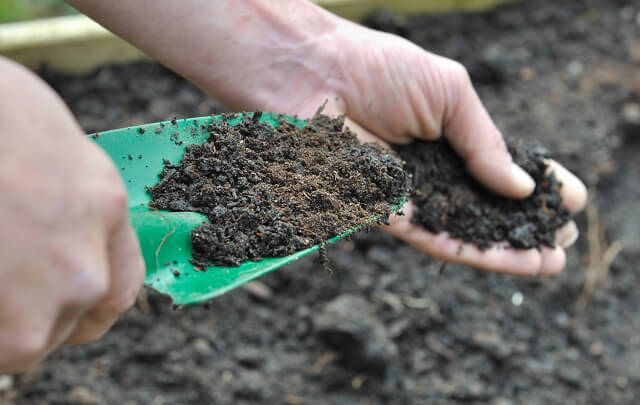
4. Layer on Mulch
Use mulch in most (but not all*) areas to suppress weeds and protect your soil from compaction, erosion, and evaporation. Bonus—mulch increases organic matter, too!
*Many native bee species are ground dwellers. They need some sparsely planted open soil where they can excavate their nests!
5. Always Be Growing
Plants are soil-building partners. Perennials and cover crops provide year-round food and homes for soil microbes, and they can also be sources for compost and mulch.
You can find cover crops to plant almost any time of year. Perennials can range from toe-tickling ground covers and leafy “mulching” herbs to beautiful flowering shrubs and multi-use trees that fill many roles in your landscape.
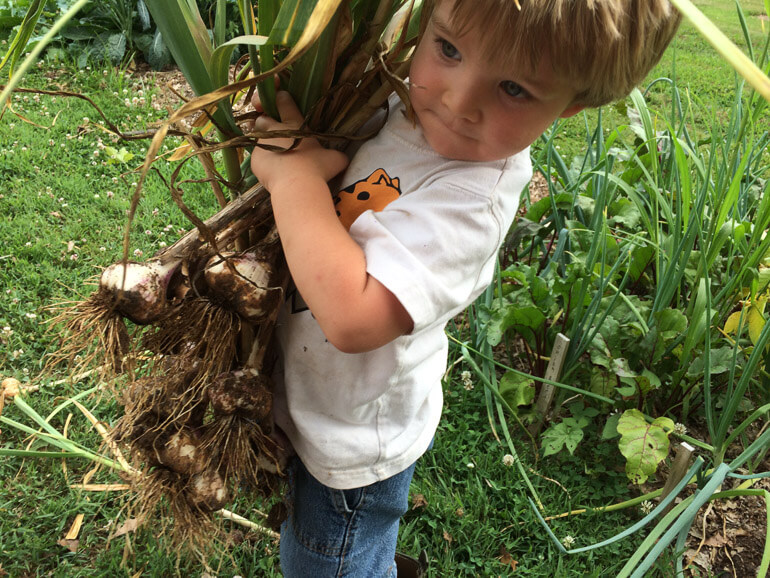
6. Rotate Annuals
Reduce disease in your veggie patch by “starving” plant-specific pathogens. Use a rotation that makes it easy to keep track what grows where over the years.
7. Tend Biodiversity
Plant, welcome, and encourage many forms of life. Biodiversity underground and above the soil makes our gardens stronger, more resilient, and more interesting.
Before making a decision in your garden, ask yourself, “Does this action increase or decrease the biodiversity in my garden and in my soil?” If the answer is decrease, can you find another way to achieve the same end goal?
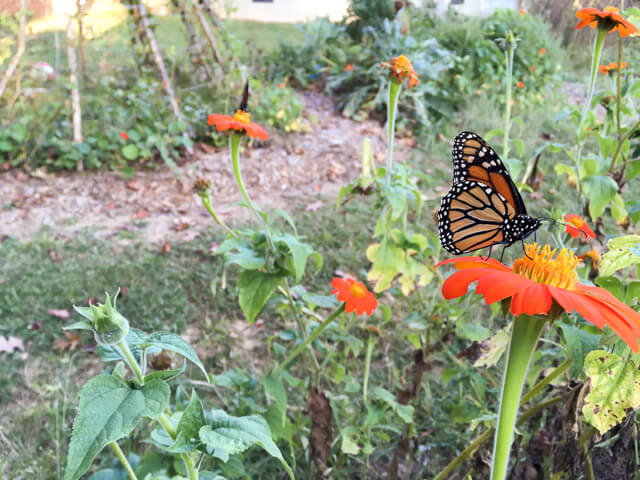
Are you practicing some of these habits in your garden already? Perhaps you’ve got a compost bin or garden journal going. Maybe you rotate your veggies or use mulch in parts of your yard. Bravo!
When you cultivate healthy soil habits, you’re gardening in harmony with nature. No more battles. Instead, you’re encouraging balance and sometimes tipping it in favor of the soil that feeds the plants that feed you. This kind of gardening feels a lot like friendship.
Of course, there’s much more to creating healthy soil, far more than I can fit into one blog post.
Once you’ve started thinking about your garden’s foundation, there are other exciting questions to answer:
1. How do I find out how healthy my soil is right now? And figure out what it needs to be healthier?
2. How can I make my compost system that fits my lifestyle and garden needs?
3. How can I find safe and inexpensive materials for mulch and compost?
4. How do I choose the right soil-building plant partners for my season and climate?
If you’re interested in finding detailed, step-by-step answers to these questions, I’ve got good news. The “7 Healthy Soil Habits” are the framework for the advanced course that I mentioned earlier: Foundations of a Happy Garden. Inside, we share lots more detail for each habit. The course is perfect for those who want to grow with nature’s help and create healthy, happy gardens.
If you want to boost your garden success, you can learn more about the course here.
But for now, I’d like to challenge you to do just ONE THING in the next 3 minutes. If you have a garden (or you’re going to start one) post a comment below with one habit out of the 7 Healthy Soil Habits that you want to use more in your own garden.
Here’s what you should post:
“I’m _______________ and I love to grow _________________. The healthy soil habit that I want to work on in my garden is __________________.”
Post your comment below to let me know what you’ll be working on for your soil this season. Are there other healthy soil habits you’d add to the list? Share your ideas here, too!

“I’m Fern and I love to grow all vegetables. The healthy soil habit that I want to work on in my garden is observe.
Awesome, Fern! Observe is one of my favorites, but sometimes I get busy and realize I haven’t been paying attention. Do you have a way that you already keep track of things you notice in your garden – journal, photographs, notes on the computer? I’m always interested in how others are “keeping” their observations so they can see the patterns.
I’m Virginia and I love to grow herbs and vegetables. The healthy soil habit that I want to work on at home and the Ministry of Health Community Garden (AKA the garden of weedin’) is to increase the organic matter in the soil.
Haha! Virginia, it sounds like your community garden is lucky to have you as a member. 😉 Maybe all those weeds you’re pulling can become part of the organic matter you use, after making sure weed seeds are killed, of course!
I’m Julie and I love to grow vegetables and herbs, as well as hardy shrubs and bird-attracting plants. The healthy soil habit that I want to work on in my garden is observe. I’d benefit greatly from using a dedicated journal and taking notes on a regular basis.
I’m Victorine and I love to grow all vegetables. The healthy soil habit that I want to work on in my garden is rotate annuals.”